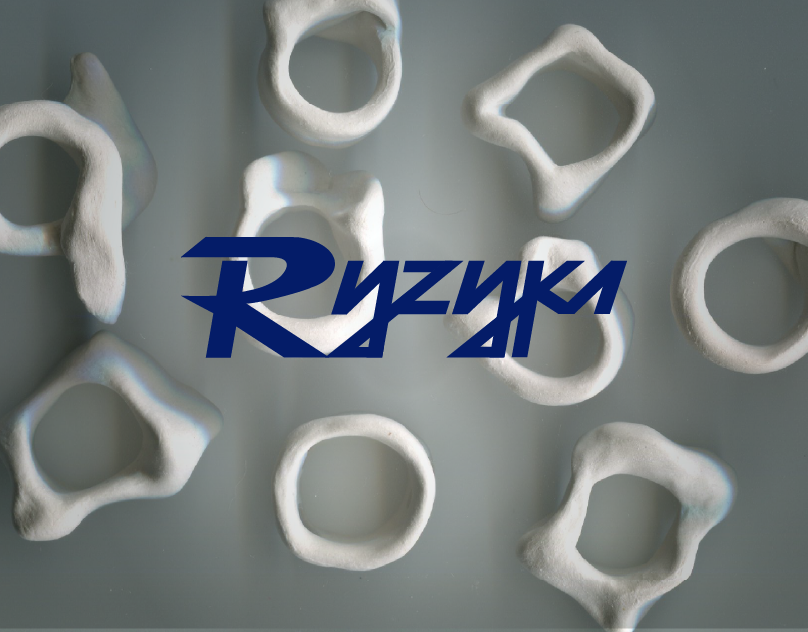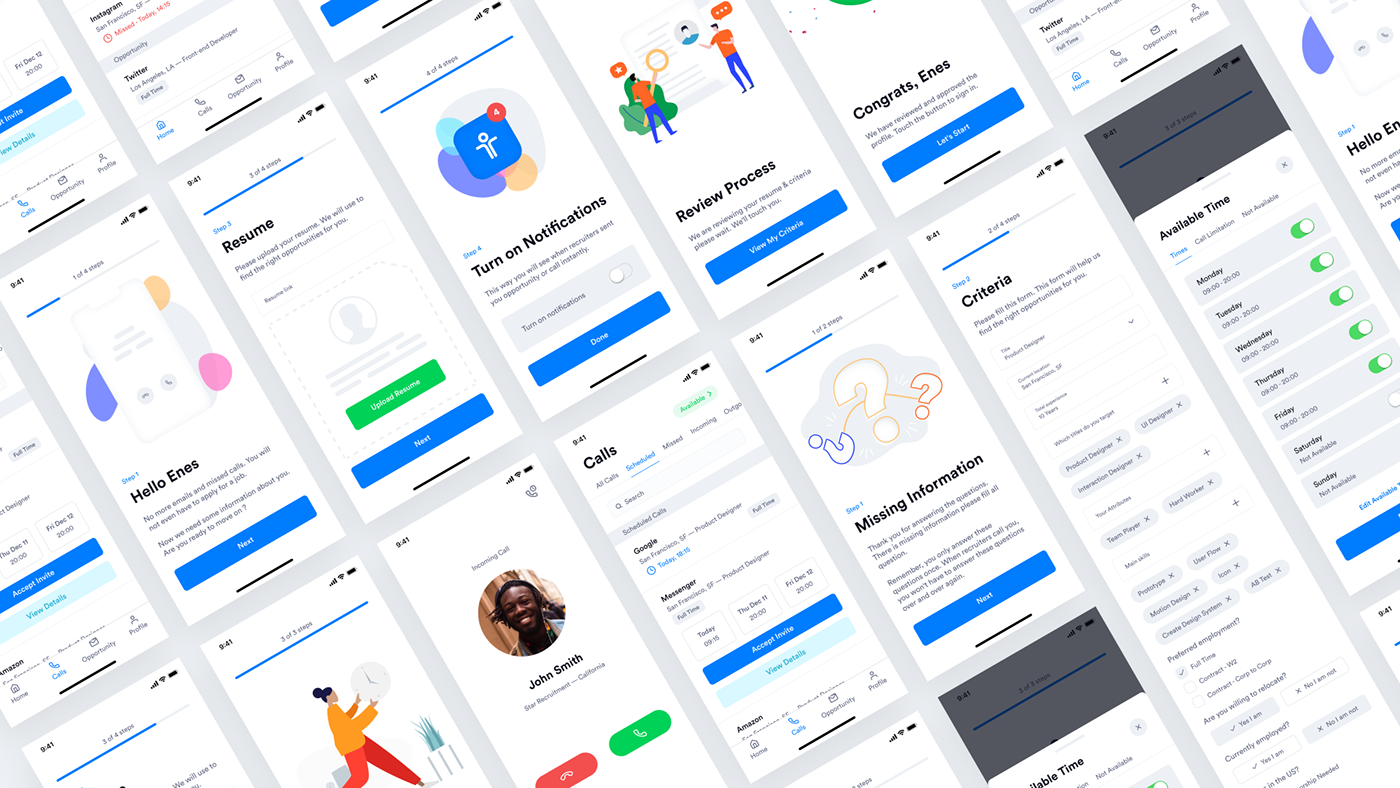
Introduction
Who is the Talent Envoy:
Talent Envoy is an automated and intelligent assistant for job seekers and assists candidates to find their next job or contract easier and faster. It is an intelligent intermediary communication gateway service, that acts more as an agent and is more than a secretary.
This is a personal assistant software for handling phone communications between candidates and recruiters or hiring managers. Talent Envoy natural language processing and question answering algorithms will avoid unnecessary emails and cold calls by recruiters. This unified communication gateway will function like a secretary service through a mobile app. It is all about connecting the right people at the right time.
My Roles
User Research, User Interviews, Journey Mapping, Sketching, Wireframing Screen, Flows, Visual Design, Interaction Design
Challenges
Actually, the point I had the most difficulty in this project is; The lack of US recruitment markets such as Turkey was different machining processes. First of all, I talked to a few recruiters experienced in the market and had conversations by asking how the processes worked in America and what issues they had difficulty with.
Overall problems
Nowadays, companies looking for talented candidates have grown considerably, so recruiters have started to have more duties. Recruiters were losing a lot of time trying to find the right candidates, unnecessary tons of mail, long calls, candidates who did not come to the interview, candidates who did not meet the criteria they thought for the company ...
This is true for talented candidates looking for a job. Candidates did not want to lose time with others by only dealing with companies that meet their own criteria. They were wasting a lot of time looking for work according to their own criteria.
Solutions
I asked talented people looking for a job to first determine what they want and their criteria. Thus, recruiters could see what criteria job seekers were looking for jobs so I saved time for both parties. In addition, I asked the candidates to answer the questions asked by the recruitment specialists during the interview, so that candidates do not lose time with the recruiters.
We guarantee that candidates only take a few minutes and then these questions will not be asked again and again. In addition, recruiters can view people who meet their own criteria on their dashboards and send job offers to them.
User Interview
Before I started the project I interviewed 5 recruiters and 5 candidates. Before I started the interview I made it clear what questions to ask and what details to give.
Some of the questions I asked the recruiters;
How many candidates do you talk to every day?
Can you tell me about the last recruitment experience?
Can you tell me about the biggest problem you have experienced in similar services in the past?
What is the most interesting thing to look at when you review a candidate?
What are the things that will enable you to decide to eliminate a candidate?
Can you tell me the biggest problem in the recruitment process occurs at what stage?
Have you had any moments in the past or now to deal with a candidate and communicate with him? What have you experienced in this process, the last point you have given up?
If you are taking notes when dealing with candidates, can you tell us about them?
Some of the questions I asked the candidates;
How often do you get job offers?
Can you tell me about the last experience?
Can you tell me about the biggest problem you have experienced in the past?
So..
After conducting these interviews with recruiters and cantidates I identified the pain points. So both of them are talking about same things.
Recruiters pain points:
Not finding the right candidate.
Candidates don't open their phones.
Candidates pain points:
Receiving offers for irrelevant positions.
Receiving calls at irrelevant times.
Flowchart
After gathering a lot of information. I had a vision in my head of how the app will function. So, I started with mapping. First, I started with sketches on my notebook and then I finalize the Flowchart with Flowmapp.
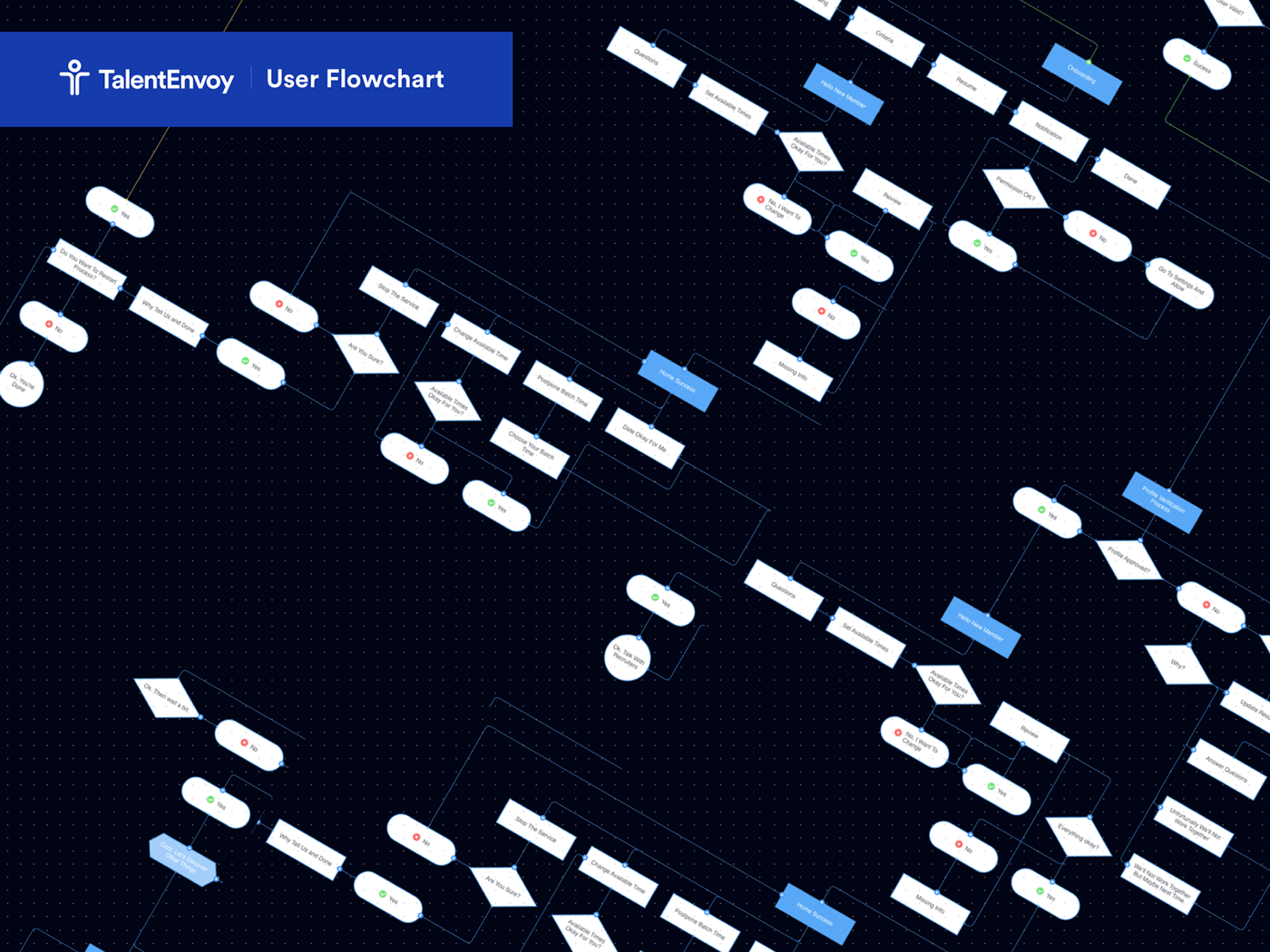
Wireframes & Sketches
I think every good project starts with a wireframe & sketches. I have to solve issues with wireframes. I sketched countless ideas and brainstormed various possibilities and created low-fidelity wireframes and prototypes to test.
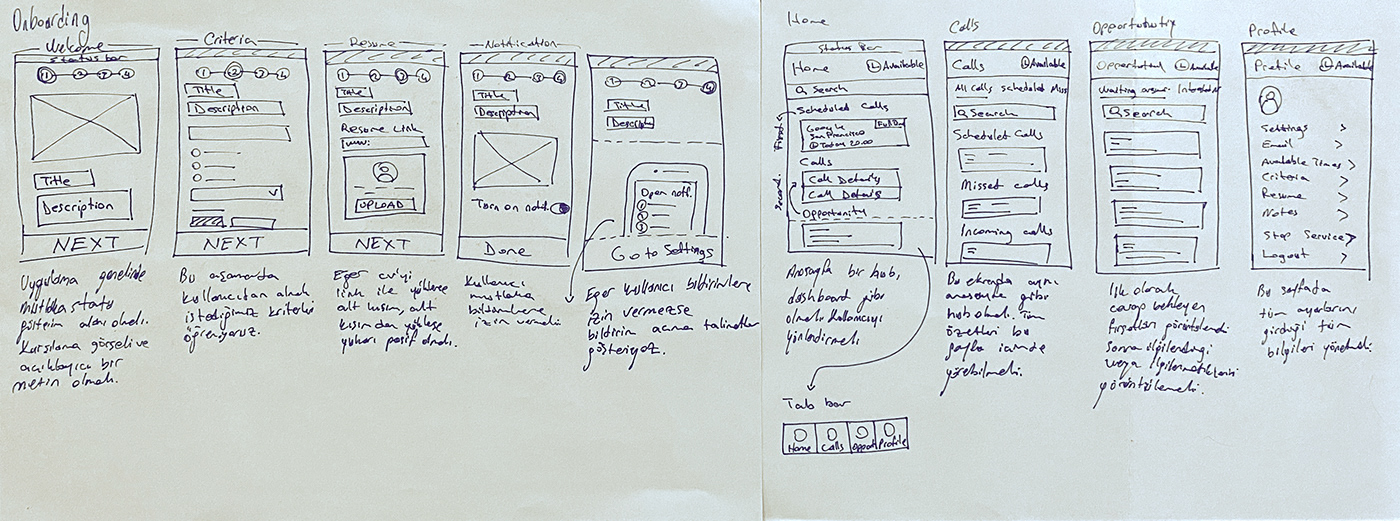
User Interface
Onboarding
A good onboarding can solve many problems. According to the results of the research, many problems actually occur at this stage. I explained the pain points of both sides above, now I want to touch on how I solved those problems.
At this stage I asked candidate to set his criteria because he had to share this information with us in order to provide him with the right job opportunity. First, we identified the most important questions and order we wanted to learn from candidate. These; Title, location, experience, target title, attributes, skills, employment type, relocate, currently status, status in the US etc. With the answers of these questions, we were able to suggest the right candidate to the right company and the right candidate to the company thanks to artificial intelligence.

After learning the criteria of candidate, we asked for the user's resume to share with the relevant people, as well as required the notification permission. It is necessary to say not to pass the notification permission, it was absolutely necessary for our application to work in the most correct way (process follow-up, reminders, calls, business opportunities).
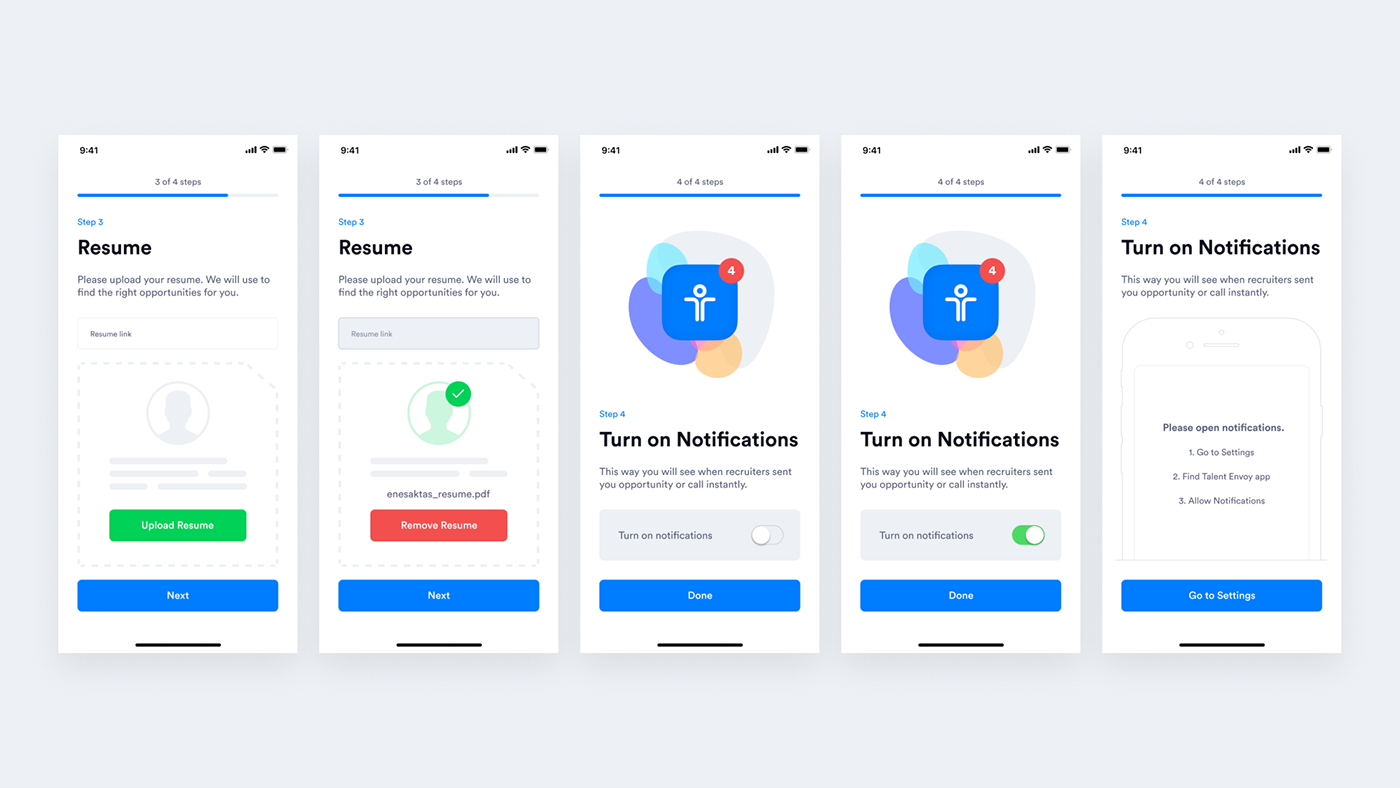
After all this, it was our turn to complete the first phase of candidate onboarding. After reviewing the criteria and information that candidate shared with us, it was time to ask questions that we would specifically ask him. This phase was the point to end candidates' unnecessary phone calls with recruiters. First, we prepared special questions for the titles we target most. We divided the questions into two categories; General and Technical questions. We directed these questions to candidate and waited for them to answer these questions.
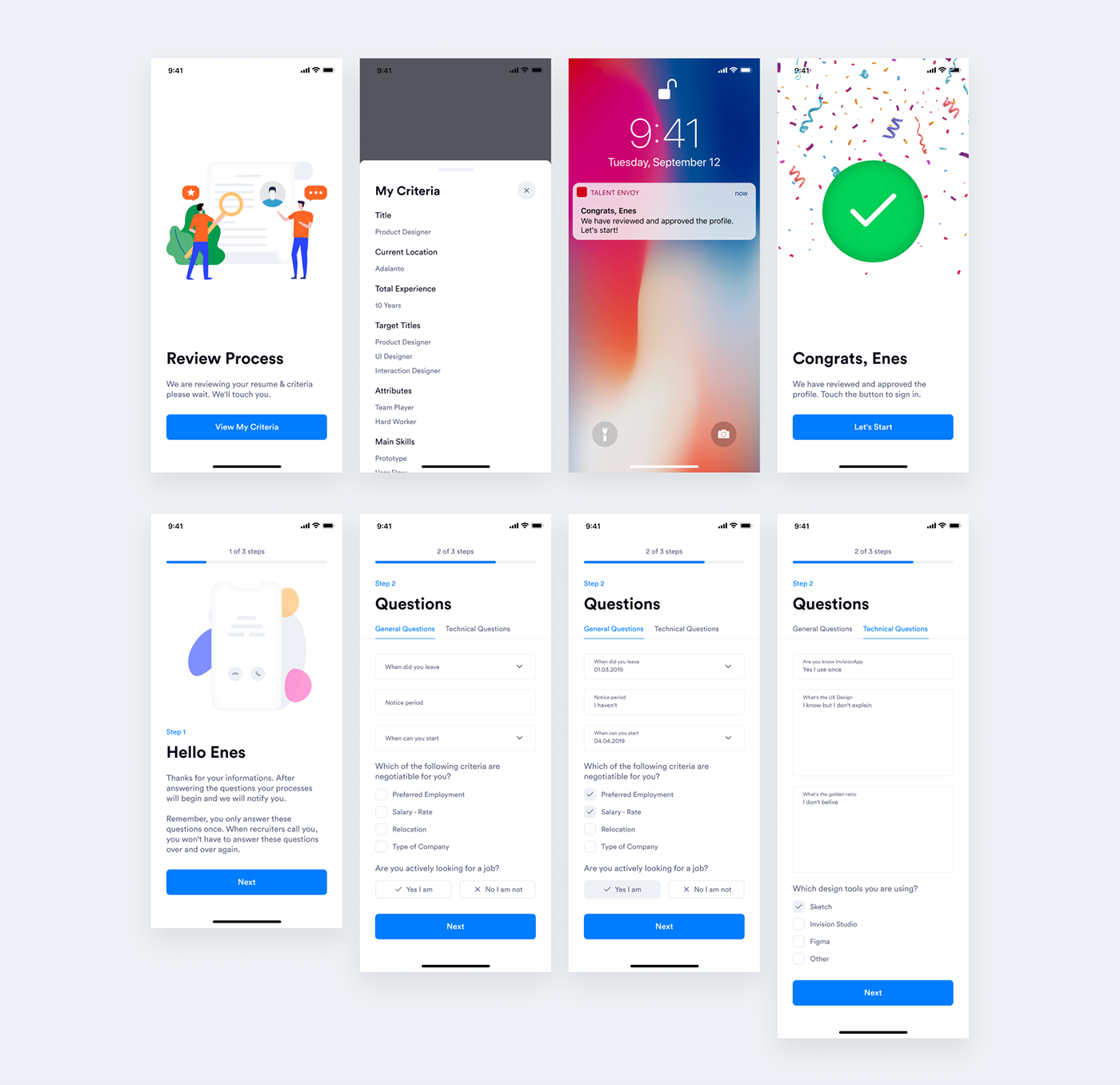
After Candidate answered the questions, there was only one thing left to do: choose the time zones that were available. As you know, the candidates were uncomfortable with the phone calls that came at an unrelated time, and the recruiters were uncomfortable with the candidates not answering their phones. I solved this problem by having candidate select the appropriate time zones.
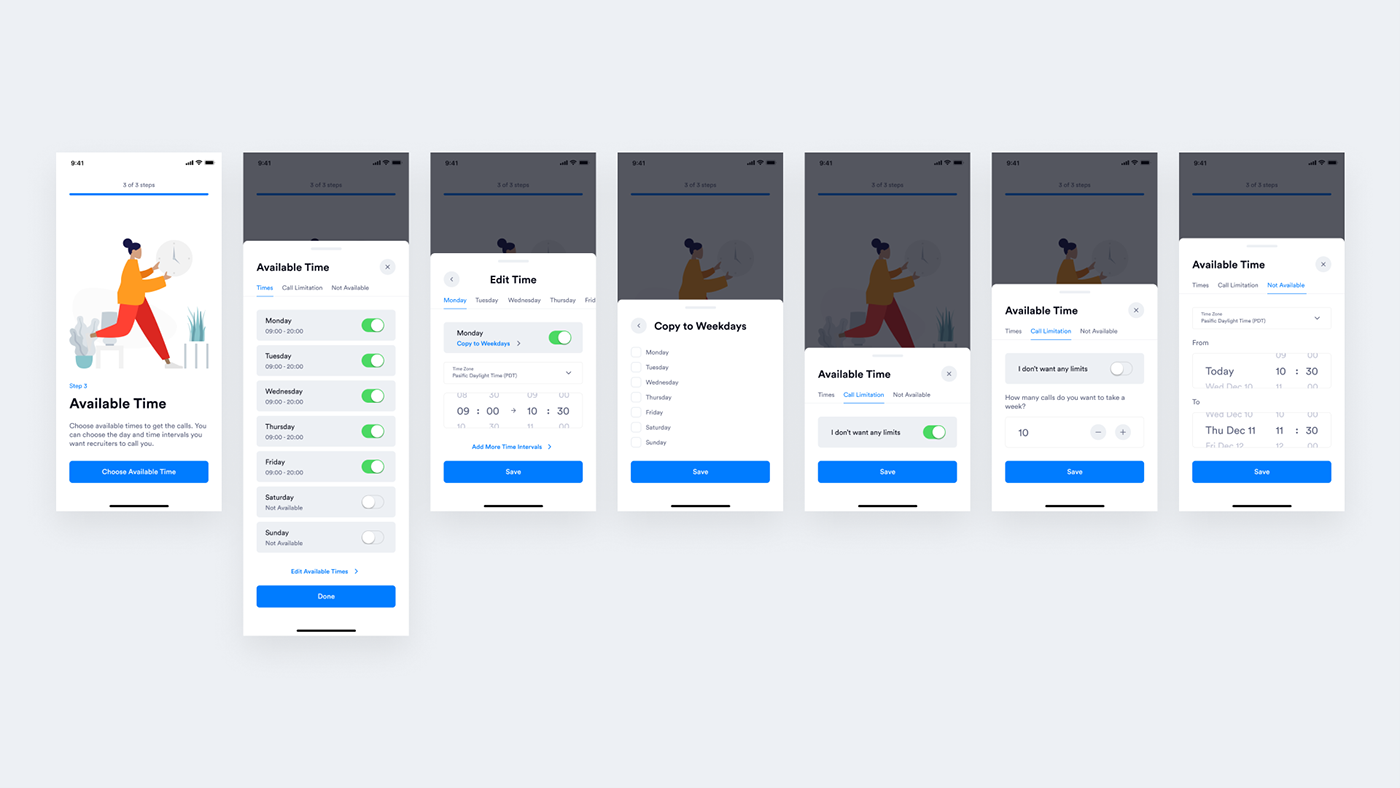
After examining the answers from Candidate if we didn't get clear answers to the questions, we sent them to answer some questions again. In this process, we sent a notification to candidate and gave descriptive information about the process.
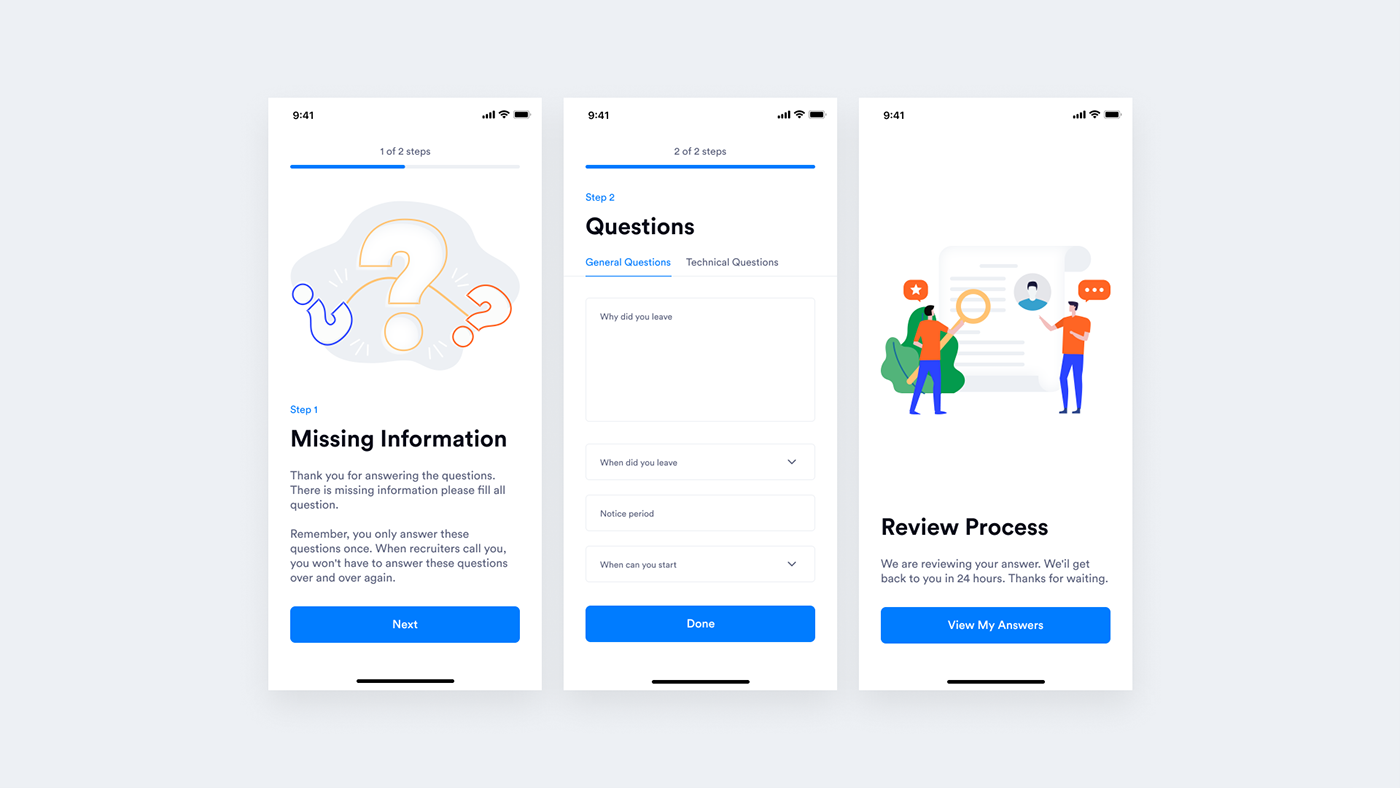
Home
Now that candidat start using the application, I want to talk about the layout on the homepage. I thought of the homepage as a dashboard with important information. Candidate can edit own availability at any time, see your next scheduled call, I have positioned a calls section to quickly return if there are calls candidate can't answer. I also created a preview area so that candidate can see the last opportunity that came to him. After my interview with candidates I decided on the information on the cards according to the responses when creating the information architecture.
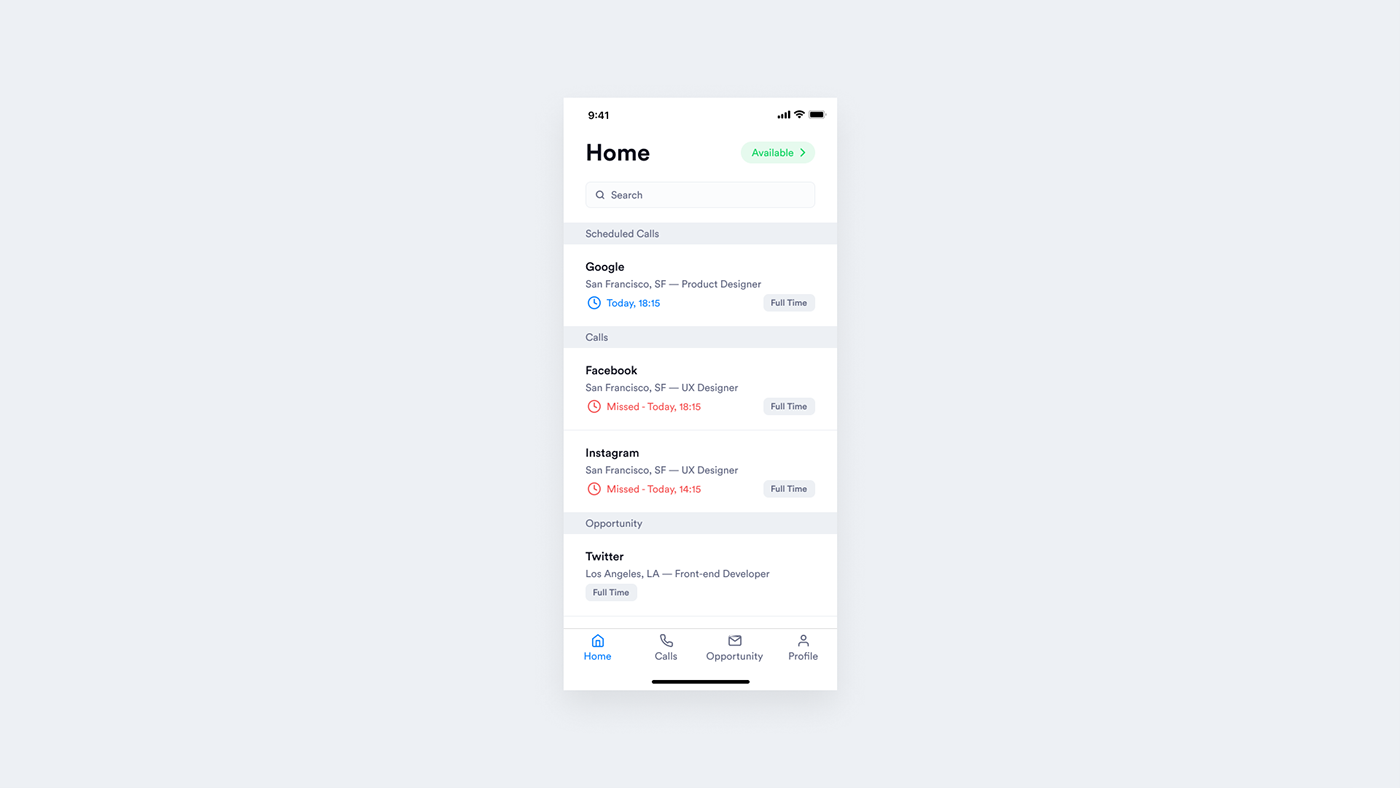
Calls
On this page candidate can review the entire search summary and switch between tab view for other search types. As you know candidate had adjusted the time when it was available. Also candidate can view, reply, edit scheduled invitations on this page.
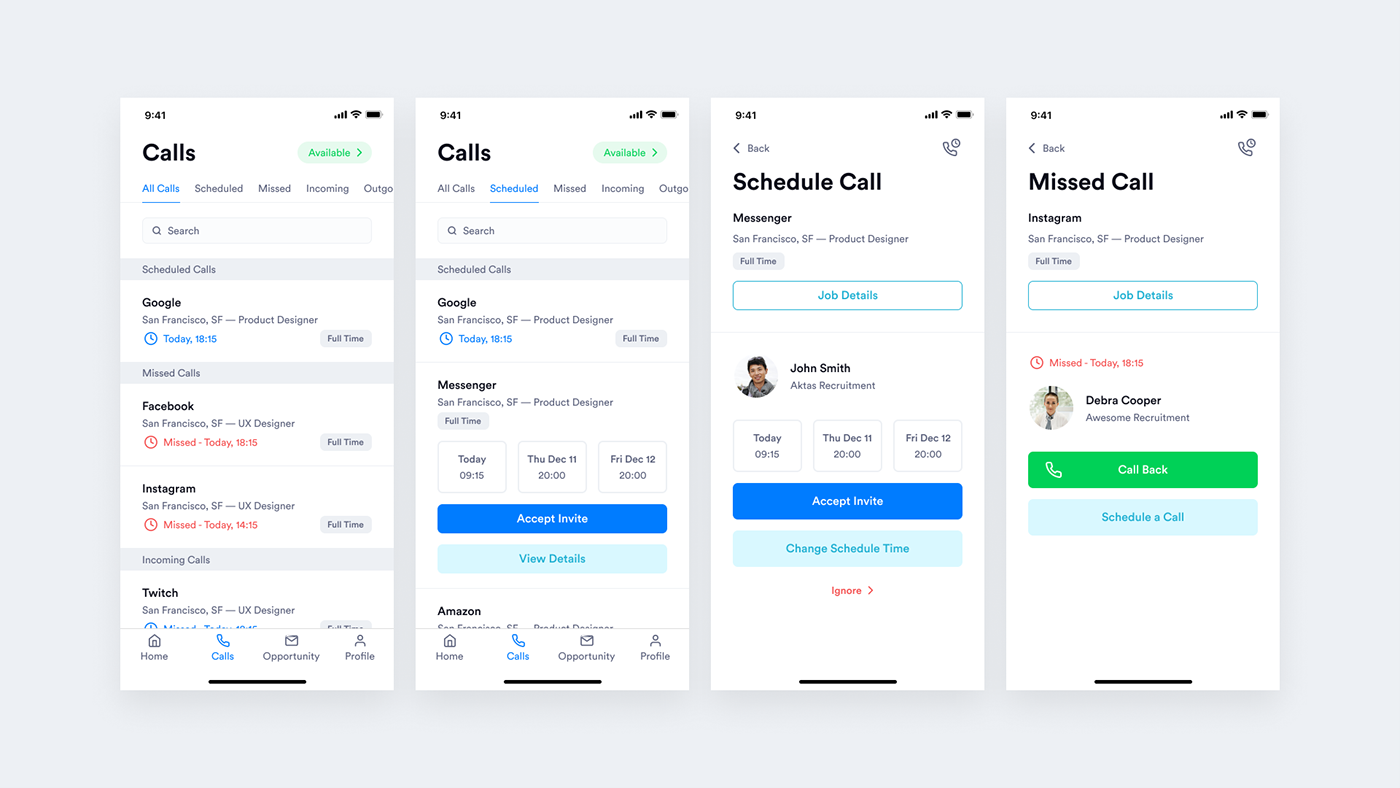
Opportunity
At this stage, candidate can view the details of his / her bids and respond to these bids. If the proposal does not attract candidate's attention, it must definitely choose a reason when rejecting it so that we do not send every job offer to candidate.
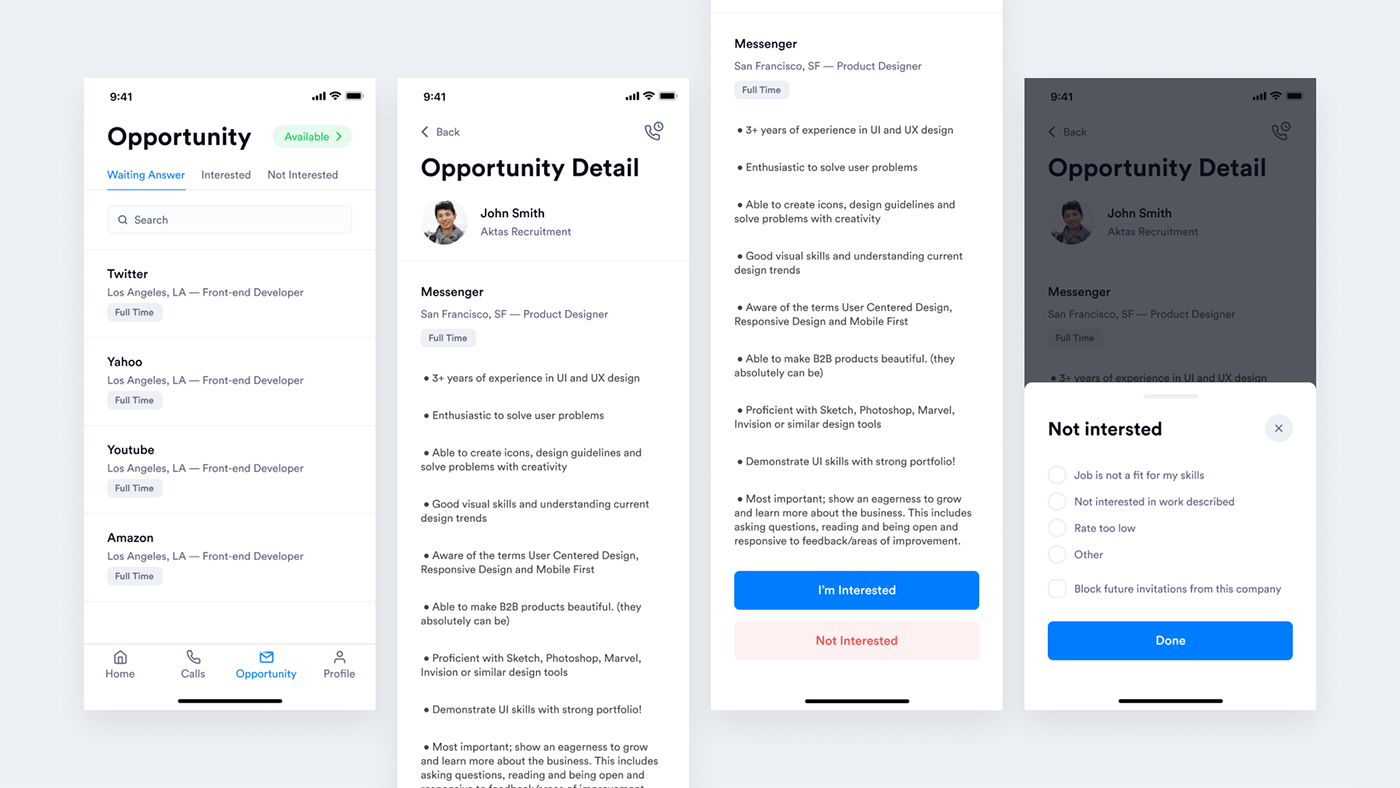
Other screens
Candidate can change and update all the information that it entered before on profile page. He can manage all details on this page. Candidate can answer calls from recruiters on call screens. He can display job opportunity details. After opening the phone he can access the previous call details and take notes for each call.
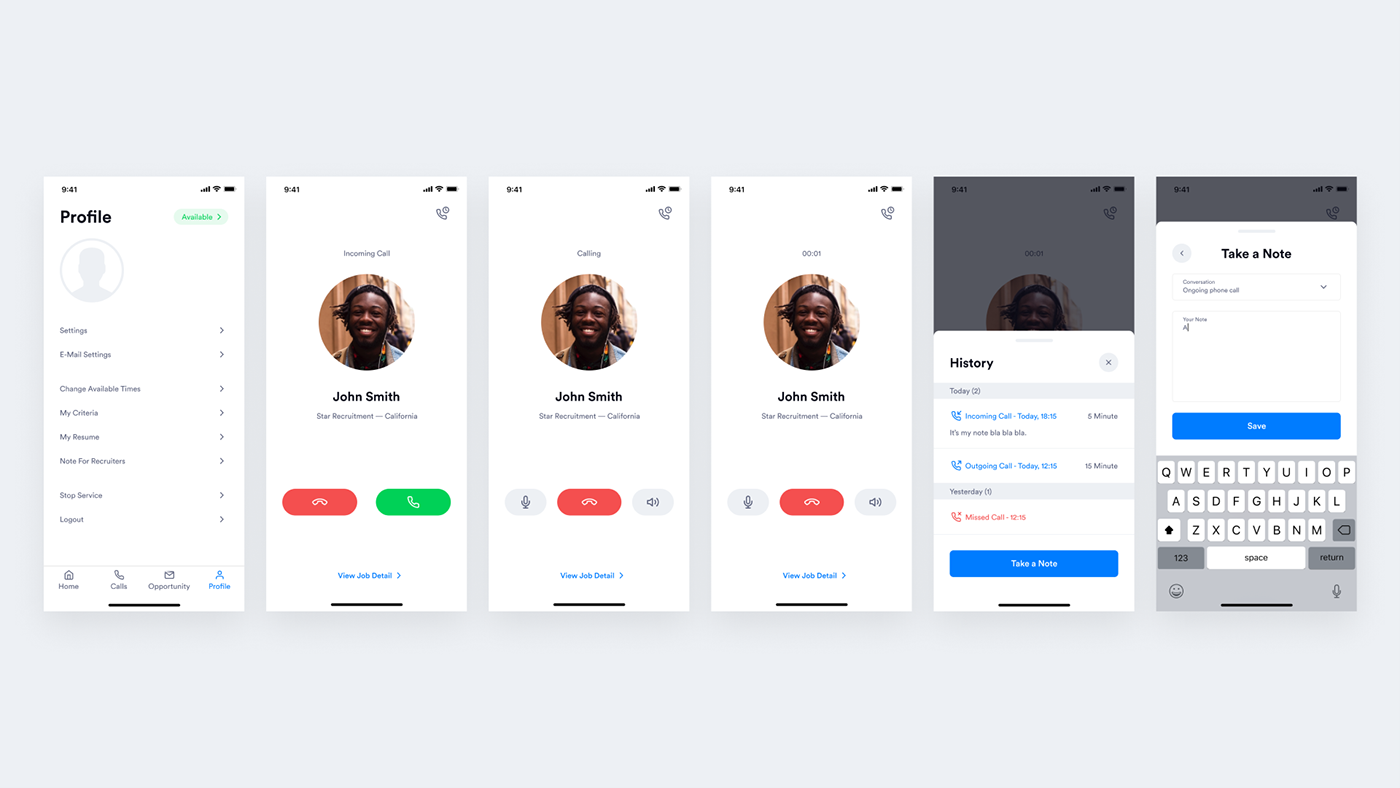
I have never written a case study in my 7 years of design career. Help me find my mistakes and if possible encourage me a little. Thank you for reading my case study. Thanks once again.
